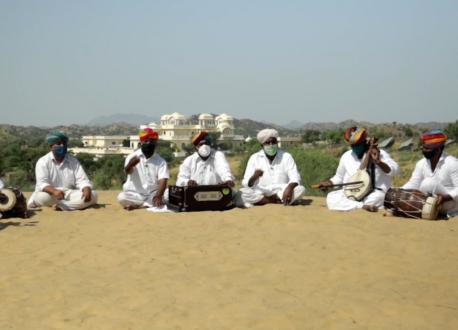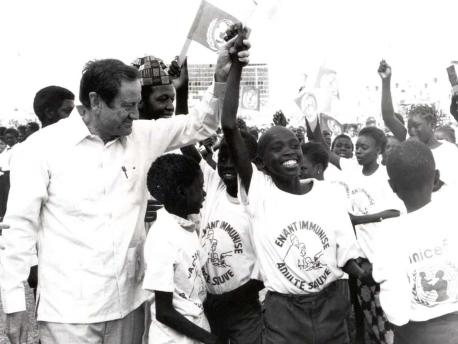
How to Close the Immunization Gap? Summon the Spirit of Jim Grant
Two decades after the death of UNICEF's visionary leader, the solution may well lie in the answer to the question 'What would Jim Grant do?'
This article originally appeared in the Huffington Post. Please support UNICEF's immunization programs during World Immunization Week 2016.
Immunization is one of global health’s greatest success stories, saving up to 3 million young lives every year.
When the international community observes World Immunization Week in April, we will probably hear a lot about “closing the immunization gap.”
Immunization is one of global health’s greatest success stories, saving up to 3 million young lives every year. But deep disparities in coverage mean that as many as 1.5 million children die because they are not protected. The immunization gap is created by a host of factors: a lack of access to health care, prohibitively expensive vaccines, an inadequate supply, wars, a shortage of immunization data, lackluster political support, meager financial resources, illogical fears and a dearth of knowledge about where to get vaccines.
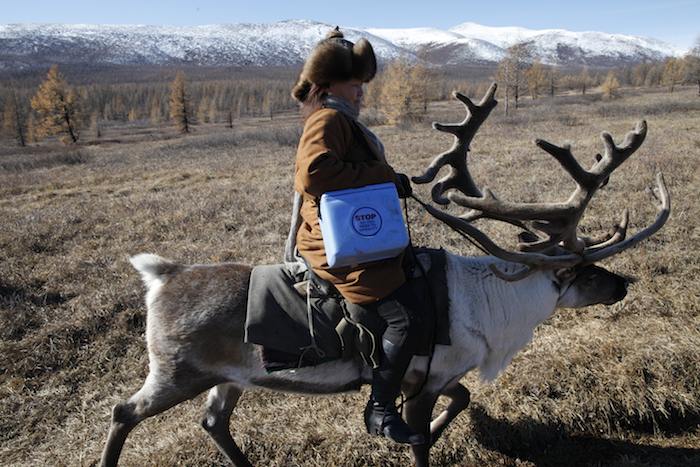
Targeting children in hard-to-reach regions, a heath worker travels by reindeer in northern Mongolia and carries an insulated "cold box" to keep vaccines at a constant low temperature, maintaining their potency through inoculation. © UNICEF/Sokol
How to overcome these formidable obstacles — and how to close the immunization gap — is the subject, year-in and year-out, of much debate and hand-wringing. As the world once again ponders this perennially vexing question, it’s worth taking a step back and asking: what would Jim Grant do?
As the legendary head of UNICEF from 1980 to 1995, James P. "Jim" Grant spurred a historic surge in childhood immunization rates and paved the way for much of the progress in recent years. Central to the “child survival revolution” he launched in the early ‘80s was a global immunization crusade — a massive effort that involved millions of people and that led to unprecedented, head-spinning advances in vaccine coverage from China to Colombia to Bangladesh. Between 1980 and 1990, worldwide childhood immunization rates for six killer diseases rose from between 16 and 21 percent to nearly 80 percent.
Grant relentlessly shamed and coaxed dozens of leaders — from enlightened statesmen to brutal tyrants — into vaccinating their countries’ children.
Grant relentlessly shamed and coaxed dozens of leaders — from enlightened statesmen to brutal tyrants — into vaccinating their countries’ children. In many cases, he and UNICEF representatives fueled a sense of competition, playing one country against another.
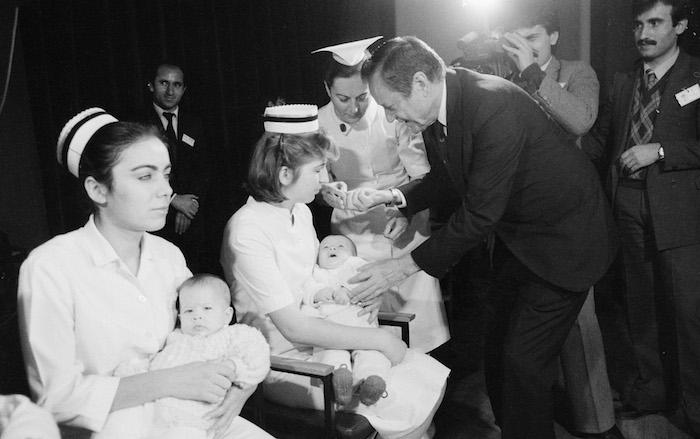
During the final round of a UNICEF-supported immunization campaign in 1985, UNICEF Executive Director Jim Grant prepares to administer a dose of oral polio vaccine to a baby held by a nurse at Hacettepe University in Ankara, Turkey. © UNICEF/Isaac
There were obstacles, of course, but Grant either knocked them over or went around them.
In 1985, he decided to push an immunization campaign in El Salvador. And what about the inconvenient fact of the country’s vicious civil war? Grant’s reply was simple: We stop the war.
There were obstacles, of course, but Grant either knocked them over or went around them.
He then tasked his Central America representative, a jovial Armenian-Lebanese man named Agop Kayayan, with arranging a truce that would allow El Salvador’s children to be immunized. Working with the Catholic Church (a pivotal UNICEF partner), Kayayan, Grant and several others managed to broker a series of ceasefires. These so-called “Days of Tranquility” would be reprised year after year until the end of the war in 1992. Thousands of children likely lived as a result.
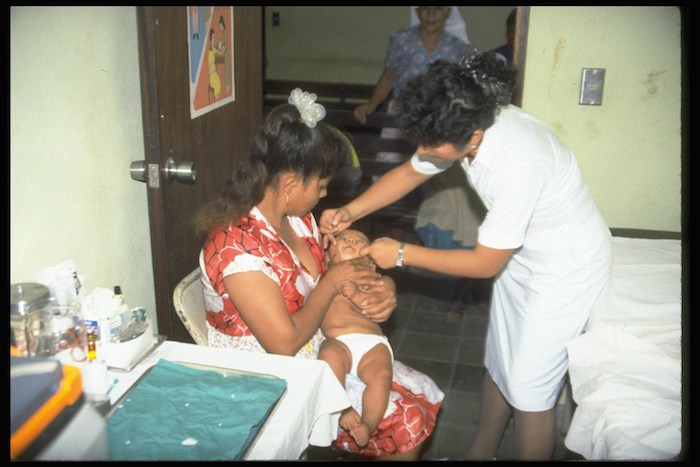
An infant receives the oral polio vaccine in the village of Las Isletas in El Salvador. Promoting "Days of Tranquillity," when civil fighting stopped, helped achieve 80% immunization of El Salvador's children against six major diseases by 1990. © UNICEF/Cerni/1991
One key to Grant’s success was building buy-in. He assembled a “grand alliance”: UNICEF staff members, volunteers, government immunizers, parents, teachers, students, community leaders, religious figures, doctors, midwives, nurses — even armies and the militias they battled. Organizations joined in — NGOs, partner agencies (like the World Health Organization), service groups (like Rotary International), labor unions, bilateral agencies (like USAID) and other donors.
'Jim really wasn’t about immunization,' Rohde says. He 'was about reaching everybody and then doing more.'
The “real heroes” — as UNICEF Ambassador Audrey Hepburn would note — were the government health workers and volunteers who administered the vaccines. Many had braved bombs and land mines, negotiated treacherous mountain passes, and risked gunfire and abduction. (In recent years, immunizers have been murdered with alarming frequency; a January attack at an immunization center in Pakistan left 15 people dead.)
In Grant’s mind, the significance of the global immunization crusade went beyond vaccines, according to his friend and collaborator, Dr. Jon Rohde (an American pediatrician who was pivotal to the launching of the “child survival revolution). “Jim really wasn’t about immunization,” Rohde says. He “was about reaching everybody and then doing more.”
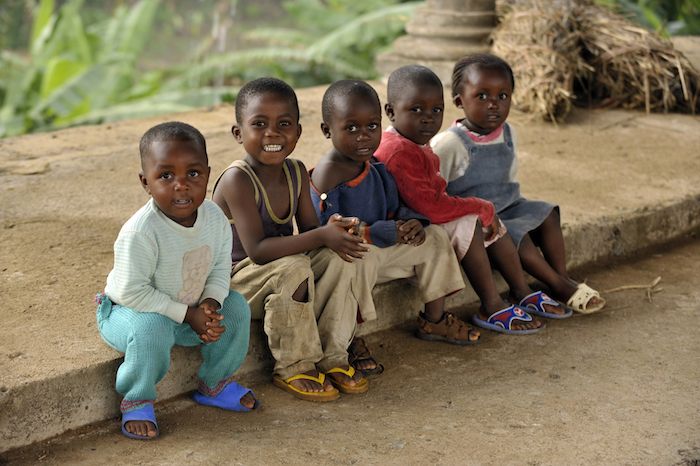
Waiting for their mothers to be vaccinated against tetanus, which also protects newborns against the disease, children sit at a vaccination station in Bafut Village in Cameroon. © UNICEF/Hearfield
Indeed, notes Rohde, the immunization campaign marked the first time a basic lifesaving service had been made available to so many on such a wide scale. “Never before in history had something been done for everybody,” Rohde says.
Grant would use the immunization gains to justify a much broader assault on ill health and poverty. In 1990, at the World Summit for Children, he secured commitments from 159 governments to pursue 27 specific, time-bound goals on child survival, health, nutrition, education and protection. These targets would later inspire the UN’s Millennium Development Goals.
Jim Grant died of cancer on January 28, 1995. Afterward, the historic, high-octane momentum he created began to falter. Immunization rates stagnated.
But the immunization gap stubbornly persists. And the job is never finished: each and every year, 140 million babies enter this world — they all need to be immunized.
Starting in 2000, after the Gates Foundation funded the creation of the Global Alliance on Vaccines and Immunization (GAVI), the sluggish immunization rates started to go up again. In recent years, there has been some notable progress, particularly in Africa.
But the immunization gap stubbornly persists. And the job is never finished: each and every year, 140 million babies enter this world — they all need to be immunized.
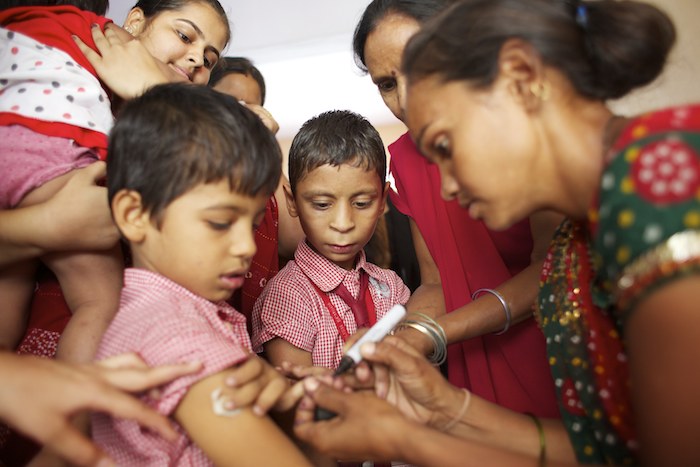
During a measles vaccination campaign in Gujarat State, India, a health worker marks a boy’s finger with ink to show that he has been immunized. © UNICEF/Pietrasik
Today, Grant’s story has essentially been lost to history. Some people believe that had he lived another 10 years, the immunization gap would be a lot narrower than it is. A few suggest that polio might even have been eradicated by now.
A lot has changed since Grant died. There are new vaccines, new technologies, new conflicts and many new players in the field of global health. So what can we still learn from the greatest immunization advocate in history?
Whatever happens — or doesn’t — the spirit of Jim Grant will be watching.
First, and perhaps most importantly, we need another zealous vaccine champion. Someone who can stoke a renewed sense of urgency. Someone who can summon and sustain the political will to make sure global health’s most effective tool reaches every child that needs it.
Second, build buy-in across a broad spectrum. Mobilize a “grand alliance” around one common goal: immunization.
Third, frame the fight for higher vaccine coverage as a fight to save children’s lives. In the fierce competition for resources in global health, the needs of children can be eclipsed by a blizzard of other priorities. To close the immunization gap, saving children must be the end goal.
Lastly, be bold and audacious. Push the parameters of the possible.
Whatever happens — or doesn’t — the spirit of Jim Grant will be watching.
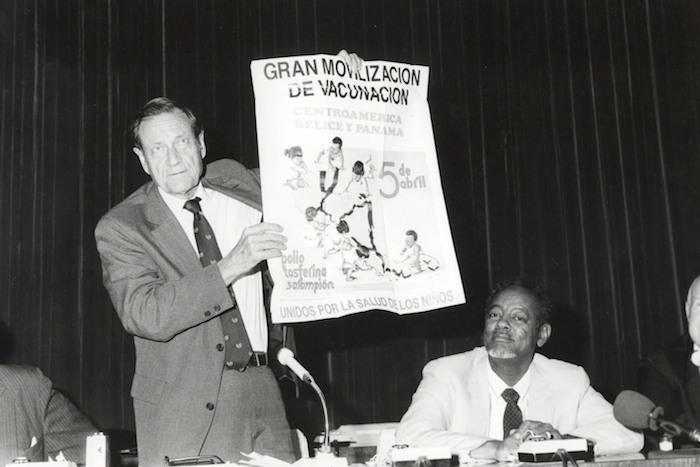
UNICEF Executive Director Jim Grant holds a placard on polio immunization at a public meeting with Ahmed Abdel-Rahaman, who was responsible for relief programs in the Sudan. © UNICEF
To learn more about former UNICEF Executive Director Jim Grant, read "A Mighty Purpose: How Jim Grant Sold the World on Saving Its Children" by Adam Fifield, a former U.S. Fund for UNICEF staff member whose journalism has appeared in "The New York Times" and "The Washington Post."
